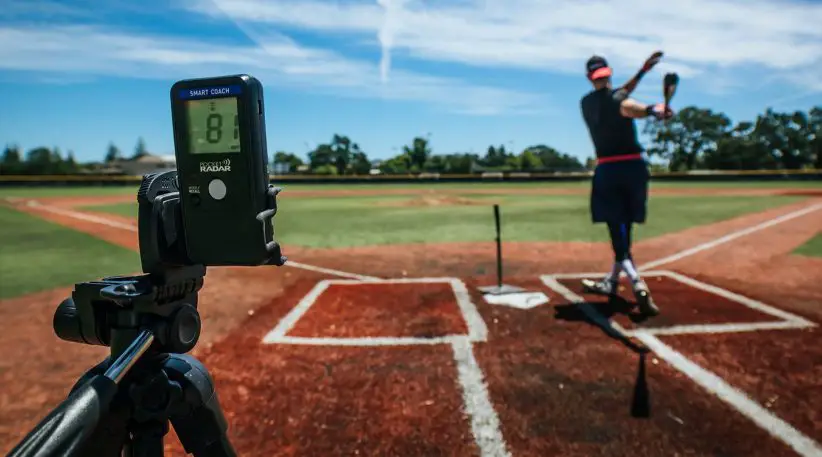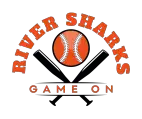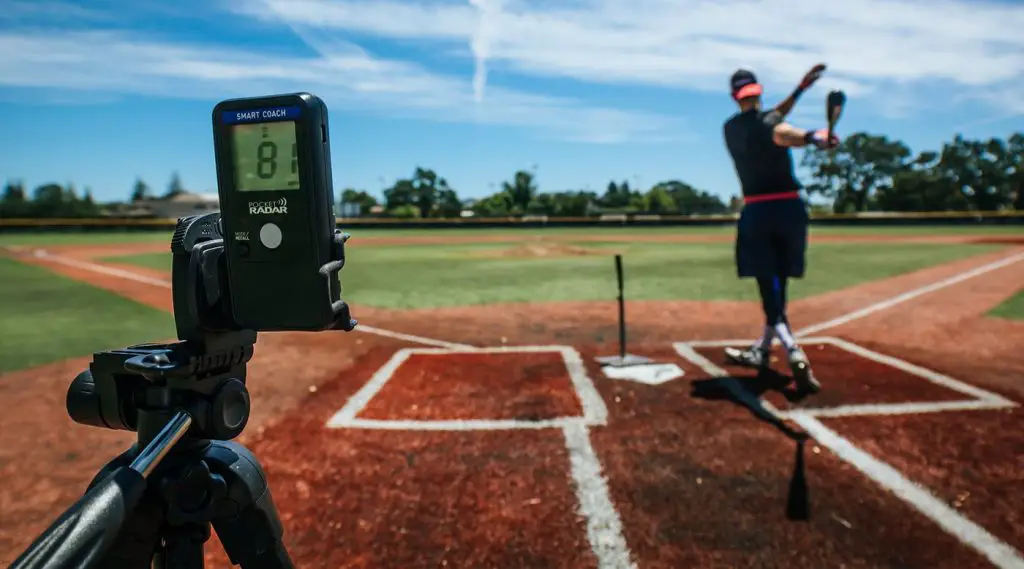It is the nature of every sport to be competitive, and baseball is no different. There are immense skills one must work on to get a chance to play in the big leagues.
Exit velocity might not be necessary for a teenager who is just in the beginning stages. Still, as they get to college or league try-outs, an exit velocity as high as 90 miles/hour is expected.
Statistics are an integral part of the baseball game, and it helps players shape themselves better.
If you have ever seen a baseball game on television, you might have noticed how much screen space is generally provided to stats.

The television screens regularly evaluate the players on how they are performing. How hard a ball is hit with the bat, how fast it was thrown, how high it went, with what average are the players' running and much more. Analytical Statistics have always been inseparable from baseball.
Almost all the major league stadiums across the world were equipped with the "Statcast" in 2015. The statistics that we receive these days are mostly from these and are quite dependable. Ranging from the likes of exit velocity, bat swing speed, hit distance to the launch angle and exit velocity, each statistic is made available to the viewers in a fraction of a minute.
For those looking forward to improving their exit velocity. There are two key things to work on, power and bat speed. The key factor one can work on making them up to the mark is weight training.
What is Exit Velocity?
It might sound a bit complicated, but it isn't. When the ball is hit from the bat, the speed at which it leaves it is known as exit velocity. It is a comment on the pitcher's skill too as, the faster the ball he throws, the higher is the exit velocity.
Talk about some of the players who top the exit velocity bars are the likes of Joey Gallo, who has the highest rank in terms of exit velocity with 117.50 miles per hour—seconded by outfielder J.D Martinez with a mindblowing exit velocity of around 116.7. The average of the exit velocities of the top three players is 93.9, 93, and 92.4 for the first, second, and third, respectively.
People often argue that the old-time players were better than modern ones. But the point to note is that the exit velocities of the 21st century are significantly higher, and the speed at which pitchers throw has also increased with time.
So it is safe to say that players like Babe Ruth have comparatively much less exit velocities.
As any sport evolves and gets more competitive, players improve in terms of stats. Also, today's players must be competent, not only at hitting but pitching and fielding as well.
How Does A Player Improve Baseball Velocity in Hitting?
As discussed earlier, the key points that will help you increase your exit velocity is the speed of your swing along with the power with which you hit the ball.
The best part about the factors affecting exit velocity is that they are more of an acquired skill.
Most of the major league players improve their exit velocity with immense dedication and training. It provides players with the challenge of improving their physical and mental ability because as the speed of the ball you are going to hit is very high, you need the right timing.
And to correct your timing, you need to train yourself to react rapidly, which requires mental conditioning and training.
Hitting a ball hard may improve with a bit of practice, but in baseball, placement is essential too. Hitters have to react to a fastball, strike them, and place it correctly so that they can turn the game in their favor.
No doubt increasing exit velocity is crucial, and it is not easy. There are basic training methods you can adapt and train as long as you can to make a drastic change.
There is the concept of 'weight training' that you can opt for, which is quite simple to understand.
What you have to do in 'weight training' is practice swinging as hard as you can with a heavier than usual bat. When you learn control of a heavy bat, it builds up your upper body strength.
Also, when you swing the actual weighted bat, it is way more comfortable than before. It is a popular training method often used in other sports too, like cricket and hockey. For more drastic improvements you will have to train dedicatedly.
There are a lot of approaches to improving exit velocity; this article states some 'common sense' along with some technical drill which is often used to train players. Improvement of exit velocity requires significant focus, and you will have to dedicate a notable amount of time.
Here are some of the areas that one can improve their games in:
Body Mechanics: If a player adapts for a better body movement, the exit velocity can increase drastically. The player should think of the bat as an extension of their arm.
Fundamental actions that help increase exit velocity are as follows: how you flex your wrists, how you move the upper part of your body in direction of the ball by rotating your lower body, shoulder movement, forearm strength, etc.
Bat Speed: Simply, if the speed of the bat hitting the ball is high, then the exit velocity will be higher. Although the weight training method helps increase the speed of the bat, the player must focus on his lower body movement and how he can improve the lower body mechanics to swing the bat.
After performing the stride, players can improve on rotating the bat while swinging with their wrist to improve exit velocity further.
Bat Swing: According to the law of conservation of momentum, when two bodies collide, the system's total momentum remains the same. In baseball, this can be seen in the application when the ball hits the bat. The weight of the ball is less than the bat, but the velocity is much higher than the bat.
Similarly, the bat has a greater mass; that's why the ball, which is usually downwards in trajectory, is bounced off in the upward direction by the swing of the bat. How you curve your swing is an essential factor in deciding the exit velocity. If you hit the ball in a perfect swing, then the exit velocity is higher.
Make Yourself Swing Hard This may be intuitive, but whenever a player swings the bat, they don't do it as hard as they can. The intention of a hard swing can only develop if you truly commit to swinging the hardest you can. Using perfect body mechanics and practicing repeatedly, this habit can be developed.
Some Technical drills designed to develop the two aspects of improving the skills required to increase exit velocity can be divided accordingly.
- Bat Speed: Overload/Underload Bat Training
- Swinging Power: Gym Weight Training and Exercises
Any training requires a punctual schedule. To improve your exit speed, you will have to create a 6-day workout schedule and master a perfect exercise plan. Your plan will include one day for improving your bat velocity by overload/underload bat training, which will increase your swinging capability.
Improving swinging power will require a comprehensive workout. The main body parts that you will need to strengthen are your core, feet, and legs.
You will also have to work on your forearms along with your wrists, which is a significant point that many often overlook.
Your training schedule will include workouts, including weights, to strengthen your core, legs, and upper body. Weight training for developing forearms is also recommended. To balance it, you will have to perform some resistance training ( does not include weights), to accompany weighted workouts.
The benefit of these workouts is not just limited to baseball. These can improve your general physic positively and will keep you fit. Major league baseball players perform these workout daily with of course some variations, but the basic idea of the training is the same
If you perform working on your swinging skills and hitting skills extensively, it will take you about a month to notice any kind of difference. For some targets, if you want to get in the college team or a minor league team, you will need the exit velocity average of about 90 miles an hour.
1. Underload and Overload swing training
Have you ever wondered why we generally tend to do the repetitive tasks better and faster as compared to the ones we rarely do? Well, it is because of our central nervous system(CNS). If we do something long enough, and repeatedly, then it is stored in our muscle memory.
Similarly, in baseball, the ball comes towards you at such a high velocity that hitting it with a thin bat seems far from likely, yet we see people hitting them perfectly for a home run.
All of this is possible with muscle memory, as our muscle memory develops, our brain needs less time to align our body according to the situation. Out of all the skills needed in the baseball field, hitting the ball arguably requires the highest skillset.
With repeated training, muscle memory is significantly improved, which reduces reaction time and thus helps in hitting the ball perfectly in the desired direction. After a significant amount of training, a hitter can also train to choose between different shots on ground.
Overload and Underload Batting Drills
According to a recent study, your exit velocity will increase by 10 percent if you hit a ball with a normal weighted bat after swinging the heavier bat.
Although it is generally accepted that as you increase the weight of the bat, you will also improve your results. Well, it can not be further from the truth. The idea of increasing the weight of the bat helps you improve, but only to a certain point.
For instance, for this drill, you have to take three bats. A normal weighted one, a heavier one, and a lighter than usual one.
Point to be noted is that the bat that is heavier is usually 12 percent heavier, and the lighter one is 12 percent lighter. The weight difference should be equal. The limit of the weight difference should not be more than 20 percent.
A traditional weight of a baseball bat is 32 ounces, so the ideal weights of the bats in increasing order are 28.16 ounces, 32 ounces, and 35.84 ounces.
The Drill
As I mentioned earlier, to perform this drill, you should have three bats with different weights. You can improvise by using a broom or a stick in place of a lighter bat, and you can add some weight to your existing bat for the heavier one.
Whichever way you want to do it is your choice, but the weight difference that is mentioned above should be followed as precisely as you can.
Since you cannot pitch a ball by yourself, you will need another person to throw you softball for you to practice swinging. If you do not have anyone to throw you the ball, you can always approach a batting ring. Tying up a ball and suspending it from the branches of the tree can be another way.
First
Swing the heavier bat 15 times, after performing a brief warm-up.
Second
Now take the lighter bat of the lot and make 15 swings with that.
Third
Finally, take the normal weighted bat and make 15 swings of the ball being thrown to you.
Rest
Repeat
The same routine is to be performed regularly. You would need to keep a fundamental thing in mind, that is, you should not take more than 15 swings with the heavier bat as it can ruin your upper body balance and affect the swinging mechanism.
Note:-If you improvise and opt for a broom or a stick or even a bat made for kids as a lighter bat, you should choose one with a length exactly similar to your regular bat.
To notice any kind of improvement, perform this drill for at least 2-4 weeks.
2. Weight and Resistance Training
To improve the power at which you are hitting the ball can only be enhanced if your built is improved. And as we discussed earlier, there are five areas of your body on which you will have to work.
- Feet
- Legs
- Forearms
- Wrists
- Abdomen
Exercises for Building Leg Strength
Legs play a vital role in your exit velocity as they provide you with a considerable force. The swing is performed in such a way that the power is moved up from your legs. And, the energy transfers from the legs to your forearms by shoulders, which gets the energy from the abdomen. Stronger the legs, the harder you will hit the ball.
Essential exercises for building up your legs are as follows:-
- Squats
- Leg presses
- Lunges
- Deadlifts
- Leg curls
Squats
Ideally, you need to do ten reps of three sets for these exercises. But if these feel a bit too intense for your body, you can reduce the number of reps to 5 and do three sets. Try to work harder and increase your reps to 10 gradually.
Lower Back Squats
This workout is the most popular to come-by; it provides you with a constructive way to improve your legs.
- Find a bar and then face it to make your set up
- You have to hold the bar in such a way that your thumbs are not holding it
- Make sure your grip is narrow
- Your rear of the shoulders should rest on the bar
- Brace the abdominal muscles gripping the bell.
- Your toes should be outwards so that the feet are way wider than the hips
- Perform the squat slowly and rest your body at the bottom position for a second before lifting up
- Do three sets of 10 reps. Accordingly, if you find them tiring, start from 5 reps and increase them gradually to 10.
Leg Presses
When you are doing this exercise, we would strictly suggest that you hit the gym and try out the equipment that are specifically designed for the purpose. The training primarily focuses on building your thigh muscles and also takes care of the calves. If you want to work on your swing power, then this is the most viable exercise for your below the belt portion.
An average person can lift as much as one-and-a-half to twice his weight when they practice it for a set of ten. It is highly recommended that you increase the weight gradually.
In case, you do not have leg press; you can even resort to the dumbbells to work out for your leg muscles. To do the same, stand upright with the dumbbells in your hand. Choose a weight that is heavy enough for you, but make sure that it is too heavy to handle. The motto here is to make sure that you develop the leg muscles.
Lifting weights is not the goal that we are looking for in this exercise. With significant numbers of repetitions of this exercise, you have better chances of developing your leg muscles.
Here is the exercise as you can do it. But before we go to the nitty-gritty, it should be mentioned here that you should select a weight not too challenging for you to complete three sets of ten each.
- Stand upright and make sure that your spinal cord is straight while carrying the dumbbells in both hands.
- Place your feet wide. They should be at least a bit wider apart from each other than the shoulders.
- The toes should slightly point out.
- Squat and make sure that you should lower as much as you possibly can.
- The dumbbells should hang on the side of the legs, but they should not touch your legs.
- Then stand upright again with your chest out and your belly in.
Lunges
For those who do lunge regularly, this would be relatable, as this is just an advanced form of the previous one. This exercise is mostly for the muscles of your upper legs.
- Pick up the heaviest pair of dumbbells that you can without exhaustion. Stand upright.
- The feet should be away from each other but not too wide.
- Lift your right leg and take a step forward. Move forward till the thigh is almost parallel to ground. Put your leg back on the ground in such a way that the heels touch the ground first.
- Breath in when you move forward
- The left leg should be bent and would be supported by the toe.
- Now pull back your right leg and stand upright again.
- It is now the time for the left leg. Complete the same process with the left leg too.
Your target must be to complete three sets of twelve each. This means that each leg in each set would be worked on six times.
Important Note: If you move forward a bit too much when you lunge, your knee joints can get aggravated and might leave you injured.
Deadlifts
The next exercise that would help you have the perfect below the belt physique that would let you have better chances in the baseball field is the Deadlift. It is one of the most elementary exercises that you would have done or you should be doing.
- Stand with the feet under a bar, and the feet should be spaced from each other.
- Grab the bars with the use of an overhead grip. The grips should be a tinge away from the legs.
- Bend up on your knees in such a way that the shins just brush slightly on the bars.
- Make sure that your chest is lifted, and the spine is straight
- Lift the weight while you flex and then tighten the glutes. Keep the weight near to your legs.
- Now, stand straight with an upright posture. Make sure that the spinal cord does not bend.
- Lower down to return the weight on the floor.
It is recommended that you practice this exercise for three sets of 10. Always remember, choosing the most substantial weight in the room would not give you the results that you are looking forward to. In this case too, it's the repetition that matters, not the weight.
Leg Curls
This exercise is for the muscles which are located in the backside of your leg, commonly called the hamstring muscles. This exercise can be performed in two ways, by sitting up or by lying down. In both ways, the effect on the hamstring is more or less the same.
Here we would be explaining the perfect method to do the exercise lying down on your weight bench.
Choose a perfectly flat bench and put a dumbbell at the low-end of the bench.
- Your knees should be near the end of the chosen bench.
- The dumbbell should be placed at the arches of the feet
- You can grab the bench at its side to help you achieve higher stability
- The legs and feet must be squeezed together.
- Lift your feet with the dumbbells on it while you exhale.
- Your feet must be flat and approximately parallel to the roof or ceiling during the entire course of time.
- Inhale now, as you slowly lower the dumbbells to the initial position. Continue to do so till the knee is completely extended.
Repeat this at least ten times.
To start with, select a weight that would allow you to have one set of 10 reps at least. Slowly, as the days pass by, you can increase the weight and the number of repetitions.
Exercises for Building Strength in your Core
When you are swinging the bat on the baseball ground, you use the energy that travels from the feet to your upper torso. To make sure that you have the most forceful hit on the ball and increase the chances of turning the game in your favor, it would be essential that you work on your core.
The core is referred to the parts of your upper torso such as the abdominal and oblique muscles. Making these muscles better would only help you have more stable and impactful contact.
Core training can be of various types. While the most popular resort, in this case, is the lifting of weight and rolling. A set of other exercises is also based on the plank exercises and is based on resistance.
Both these techniques profoundly help in building up strength in the upper torso. The best part about the resistance exercises is that they use your body weight to help you work on yourself.
Here we would be listing a few of the core exercises and also guide you with the best ways to do the exercises. These exercises would mostly focus on the abdominals and your obliques. It is highly recommended that you do not include more than six odd exercises of this type in your schedule.
Remember, it is never advisable to work out too aggressively on the same body parts.
Front Squat
This would need weights and it's very important that you choose the perfect weight and not overdo it.
- Use the barbell along with the proper weights that suit your needs.
- Grab the bar tight. The hands should be wide apart from each other, around the shoulder width.
- Now raise the elbows to that extent where your upper-arms become parallel to the ceiling.
- Wait in the position and rest the bar on your fingertips
- Move a step back with your feet at the width of your shoulder, and the toes turned around slightly
- Now you should squat low as much as possible with the arch in the lower back of your body.
Leg Raises
The exercise is great for the abdominal muscles. It only adds on more value, as the workout doesn't include weight.
- Lie down on the ground. Put your hands back and then hold a heavy-weight object to provide support to your arms. The perfect support in the gymnasium would be the bench while in your home it can be a considerably heavy chair.
- Join your legs close together and raise them. Keep raising them till they are perfectly vertical to the abdomen and the chest.
- Slowly move down your legs. But make sure that the legs do not touch the ground. Keep in this position for some time before starting on the next repetition.
You should continue this for three sets of 10 repetitions each time.
Medicine Ball
When it comes to building the oblique muscles, there is almost certainly no other exercise that is as productive as this one. Although there are quite a few exercises that you can practice with the medicine ball, the one that we would be discussing here today is called the "Russian Twist."
- First, sit in a posture that is similar to the upper part of the sit-up.
- Grab the medicine ball and bring it near the center of the body in front of yourself.
- In a rapid move, twist the body to a side. Then again twist back.
After that, move the body to the other side and repeat.
Forearm and Wrist Exercises
There is hardly a body part that is more used while in the ground than the forearm and the wrist. Thus, they need the hardest and the most rigorous training.
However, there is still a caution, make sure that you do not go too harsh on them and end up hurting the extensors and flexors. The forearm is one of those body parts that help in improving the bat swing. Here are two exercises for you that would help you work out on these parts.
Dumbbell Wrist Flexion
If strength is something that you are very keen about improving, then you have this exercise right here that would help you improve forearm and wrist strengths.
- Comfort yourself at one end of a bench or a chair. Make sure that the chair is well balanced.
- Pick up a dumbbell that you are comfortable in and now hold it with your right hand.
- Touch your right thigh with your right forearm. The right wrist must rest on the knee cap.
- With the hand, slowly and steadily lower the dumbbell. Make sure that this is as slow as it can be. Make sure that you do not lose the grip by any chance.
- Keeping your arms fixed to your thighs, slowly move the dumbbell towards the biceps.
- Again lower the dumbbell back to the initial position.
- Repeat this process until the forearm, and the wrist is fatigued. Once they fatigue out, shift to the next hand.
Dumbbell Wrist Extension
This particular exercise helps build muscles in the wrist area.
- Much like the last exercise, sit on one edge of a bench
- With your palms down, and place your right forearm on the right thigh.
- The right wrist must be on the right kneecap
- With the wrist and the forearm glued to their places, curl the dumbbell towards the biceps as much as is possible.
- Once again lower back the dumbbell to the initial position
- Once one hand fatigues out, shift to the other hand.
- Now, perform an equal number of repetitions for both wrists and forearms.





